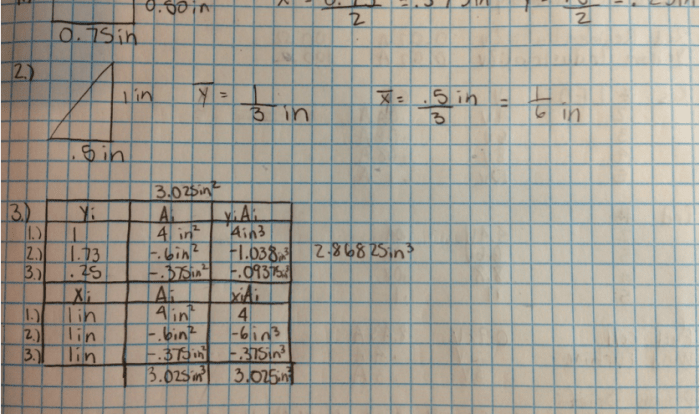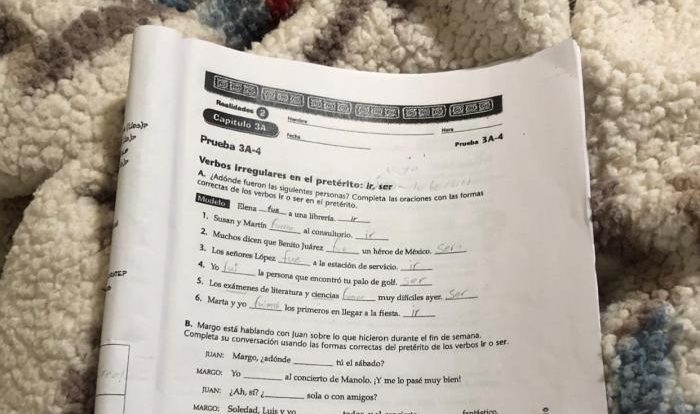Delve into the depths of American history with our meticulously crafted US History Regents Review Packet. This invaluable resource unlocks a world of knowledge, providing a comprehensive overview of key historical eras, influential figures, and pivotal documents that have shaped the nation’s past and present.
Prepare to embark on an enthralling journey through time, where you will witness the rise and fall of civilizations, grapple with the complexities of historical events, and gain a profound understanding of the forces that have molded the United States into the nation it is today.
Key Historical Eras: Us History Regents Review Packet
Understanding key historical eras is crucial for comprehending the evolution of the United States. These periods shaped American society, culture, and institutions, leaving lasting legacies that continue to influence the nation today.
The US history regents review packet covers several significant eras, each with its unique characteristics and impact. These eras include:
Colonial Era (1565-1783)
- European exploration and colonization of North America
- Establishment of the thirteen colonies
- Development of colonial economies and societies
- Tensions between Britain and the colonies
American Revolution (1775-1783)
- Causes of the Revolution, including taxation and British policies
- Key events, such as the Battle of Saratoga and the Declaration of Independence
- Role of key figures, including George Washington and Thomas Jefferson
- Impact of the Revolution on American society and the world
Early Republic (1783-1860)
- Formation of the United States government under the Constitution
- Expansion of the nation westward
- Industrialization and economic growth
- Social and political debates, including slavery and states’ rights
Civil War (1861-1865)
- Causes of the Civil War, primarily slavery
- Major battles and turning points
- Role of key figures, including Abraham Lincoln and Ulysses S. Grant
- Impact of the war on American society and the end of slavery
Reconstruction Era (1865-1877)
- Efforts to rebuild the South and reunite the nation
- Reconstruction policies, including the 13th, 14th, and 15th Amendments
- Challenges to Reconstruction, including white supremacy and violence
- Legacy of Reconstruction and its impact on race relations in the United States
Gilded Age (1877-1900)
- Economic growth and industrialization
- Rise of big business and monopolies
- Social and political challenges, including poverty, immigration, and corruption
- Progressive Era reforms aimed at addressing these issues
Imperialism and World War I (1890-1918)
- Expansion of American power and influence abroad
- Acquisition of overseas territories, such as the Philippines and Puerto Rico
- American involvement in World War I
- Impact of these events on American foreign policy and global standing
Roaring Twenties and Great Depression (1920-1939)
- Economic prosperity and social change during the Roaring Twenties
- Causes and impact of the Great Depression
- Government policies, such as the New Deal, to address the economic crisis
- Social and cultural changes during this period
World War II (1939-1945)
- Causes of World War II, including the rise of fascism and aggression
- American involvement in the war, including D-Day and the atomic bombings
- Impact of the war on American society and the world
- Post-war challenges and the Cold War
Post-World War II Era (1945-1991)
- Economic growth and prosperity
- Social and cultural changes, including the Civil Rights Movement and the Vietnam War
- Cold War tensions and American foreign policy
- Impact of these events on American society and the world
Recent History (1991-Present)
- End of the Cold War and its impact on American foreign policy
- Economic and technological changes
- Social and cultural issues, including globalization and diversity
- Challenges and opportunities facing the United States in the 21st century
Important Figures and Documents
The development of the United States has been profoundly shaped by influential individuals and significant historical documents. This section will delve into the contributions of key figures and analyze the impact of primary source documents that have played a pivotal role in shaping the nation’s history.
Key Figures
The United States has been shaped by numerous notable figures who have made significant contributions to its development. Some of the most influential individuals include:
- George Washington:The first President of the United States, who led the Continental Army to victory in the Revolutionary War and played a crucial role in the establishment of the new nation.
- Thomas Jefferson:The principal author of the Declaration of Independence and the third President of the United States, who advocated for individual liberty and the expansion of the nation westward.
- Abraham Lincoln:The 16th President of the United States, who led the nation through the Civil War and issued the Emancipation Proclamation, which abolished slavery.
- Martin Luther King Jr.:A civil rights leader who advocated for nonviolent resistance and played a key role in the passage of the Civil Rights Act of 1964.
- Rosa Parks:An African American woman whose refusal to give up her seat on a bus in Montgomery, Alabama, sparked the Montgomery Bus Boycott and became a symbol of the civil rights movement.
Primary Source Documents
Primary source documents provide firsthand accounts of historical events and offer valuable insights into the past. Some of the most significant primary source documents in U.S. history include:
- Declaration of Independence (1776):A document drafted by Thomas Jefferson that declared the American colonies’ independence from Great Britain and Artikeld the principles of individual liberty and self-governance.
- Constitution of the United States (1787):A document that established the framework for the U.S. government and Artikeld the rights and responsibilities of citizens.
- Bill of Rights (1791):A series of amendments to the Constitution that guarantee individual freedoms, such as freedom of speech, religion, and the right to bear arms.
- Emancipation Proclamation (1863):A document issued by President Abraham Lincoln that declared the end of slavery in the United States.
- Civil Rights Act of 1964:A landmark piece of legislation that outlawed discrimination based on race, color, religion, sex, or national origin.
Impact of Individuals and Documents
The individuals and documents discussed above have had a profound impact on the development of the United States. They have shaped the nation’s political system, its social fabric, and its cultural identity. Their contributions have ensured that the United States remains a beacon of liberty, equality, and opportunity for all.
Major Themes and Concepts
The review packet explores several major themes and concepts that have shaped American history and identity. These themes connect different historical events and periods, providing a framework for understanding the nation’s development.
One central theme is the pursuit of liberty and equality. From the founding of the nation to the present day, Americans have struggled to balance individual freedom with the need for social order. This theme is evident in the Declaration of Independence, the Constitution, and the ongoing debates over civil rights and social justice.
Individualism and Self-Reliance
Another important theme is the emphasis on individualism and self-reliance. American society has long celebrated the virtues of hard work, self-determination, and personal responsibility. This theme is reflected in the nation’s economic system, its political institutions, and its cultural values.
The Role of Government
The review packet also explores the changing role of government in American history. The founders established a limited government with clearly defined powers. However, over time, the federal government has expanded its authority in response to social and economic challenges.
This theme is evident in the debates over the size and scope of government, as well as the balance between federal and state power.
Economic Growth and Technological Innovation
Economic growth and technological innovation have been key drivers of American history. The nation’s vast natural resources, its entrepreneurial spirit, and its commitment to free markets have contributed to its economic success. This theme is reflected in the rise of industries, the development of new technologies, and the ongoing debates over economic policy.
Cultural Diversity and Immigration
Finally, the review packet addresses the theme of cultural diversity and immigration. The United States has been a nation of immigrants since its founding, and its population has been shaped by a wide range of ethnic and cultural groups. This theme is evident in the nation’s cultural traditions, its social institutions, and its ongoing debates over immigration policy.
Historical Analysis and Interpretation
Analyzing historical events and sources requires a structured approach to uncover their significance and meaning. Historians employ frameworks and techniques to evaluate evidence and form interpretations that enhance our understanding of the past.
A crucial aspect of historical analysis is considering multiple perspectives and interpretations. Events and figures can be viewed differently depending on the context, biases, and agendas of those involved. By examining diverse viewpoints, historians can construct a more comprehensive and nuanced understanding of the past.
Using Evidence to Support Claims
Historians rely heavily on evidence to support their claims and interpretations. This evidence can come from a variety of sources, including written documents, artifacts, and oral histories. Historians critically examine and evaluate evidence to determine its reliability and relevance.
By analyzing the context, purpose, and limitations of sources, historians can assess their credibility and use them to construct historically sound arguments. This process involves identifying biases, examining the motivations of authors, and considering the potential impact of time and perspective on the evidence.
Review and Practice Questions
To effectively prepare for the US History Regents exam, practicing with a variety of question types is essential. This section provides a comprehensive set of practice questions that cover the key topics Artikeld in the review packet, enabling students to assess their understanding and identify areas for improvement.
The practice questions include multiple choice, short answer, and essay questions, mirroring the format of the actual exam. Each question is designed to test students’ knowledge of historical events, figures, documents, and concepts. Detailed answer keys and explanations are provided to guide students’ understanding and reinforce correct responses.
Multiple Choice Questions
Multiple choice questions assess students’ ability to identify the correct answer from a set of options. These questions cover a wide range of topics, including:
- Key historical events and their significance
- Important figures and their contributions
- Major themes and concepts in US history
- Historical analysis and interpretation
Short Answer Questions
Short answer questions require students to provide concise and accurate responses to specific historical questions. These questions test students’ understanding of:
- Specific historical events and their causes and consequences
- The role of individuals and groups in shaping historical outcomes
- The impact of historical events on American society and culture
Essay Questions
Essay questions provide students with the opportunity to demonstrate their analytical and writing skills. These questions typically require students to:
- Analyze a historical event or document
- Compare and contrast different historical perspectives
- Evaluate the impact of historical events on the development of the United States
Exam Preparation Strategies
Preparing for the US History Regents exam can be daunting, but with the right strategies, you can maximize your chances of success.
Effective exam preparation involves a combination of time management, review methods, and essay-writing skills.
Time Management, Us history regents review packet
Create a study schedule that allocates sufficient time for each topic. Prioritize key concepts and allocate more time to areas where you need improvement.
Break down large tasks into smaller, manageable chunks to avoid feeling overwhelmed. Set realistic goals and take breaks to prevent burnout.
Review Methods
- Active Recall:Regularly test yourself by recalling information from memory without looking at notes. This strengthens your understanding and retention.
- Spaced Repetition:Review material at increasing intervals (e.g., 1 day, 3 days, 1 week) to enhance long-term memory.
- Flashcards:Create flashcards with key terms, concepts, and dates to facilitate memorization.
- Practice Questions:Solve practice questions to identify areas where you need more review and improve your exam-taking skills.
Essay Writing
Essays are a crucial part of the Regents exam. To write clear and concise essays:
- Read the prompt carefully:Identify the main question and ensure your essay directly addresses it.
- Organize your ideas:Create an Artikel to structure your essay logically, with an introduction, body paragraphs, and conclusion.
- Provide evidence:Support your claims with specific examples, facts, and quotations from the provided documents or your knowledge.
- Use clear language:Write in a concise and objective tone, avoiding slang or overly technical language.
li> Proofread carefully:Check for grammar, spelling, and punctuation errors before submitting your essay.
FAQ Resource
What is included in the US History Regents Review Packet?
The packet covers key historical eras, important figures and documents, major themes and concepts, historical analysis and interpretation, and review and practice questions.
How can I use the Review Packet to prepare for my exams?
The packet provides a comprehensive overview of the material, practice questions, and exam preparation strategies to help you succeed.
Is the Review Packet suitable for all levels of students?
The packet is designed to benefit students of all levels, from those seeking a basic understanding of US history to those preparing for advanced exams.


